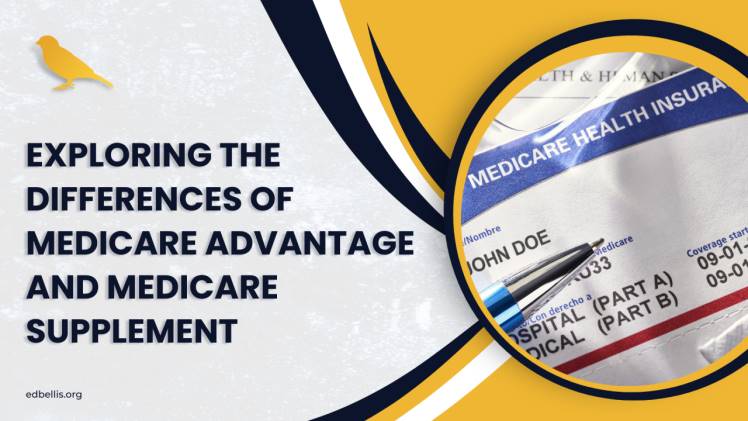Strategic Planning: Adapting to Changes in Medicare Supplement Plans by 2025

The landscape of healthcare is an ever-evolving canvas, with new regulations, services, and technologies painting out different visions of the future. For millions of Americans, Medicare is the brush that colors their medical coverage – and it’s a canvas that holds significant personal and financial weight. By 2025, Medicare Supplement Plans will undergo a series of changes that can affect consumers and healthcare providers alike. In this blog post, we examine the strategic planning required to adapt proactively to these changes, ensuring that beneficiaries continue to get the best coverage for their needs https://www.medisupps.com/medicare-supplement-plans-2025/
Understanding the Scope of Changes
Medicare Supplement Plans, also known as Medigap, are designed to pick up where traditional Medicare leaves off, providing supplementary coverage for costs such as copayments, coinsurance, and deductibles. These plans have been a critical component of healthcare for people over 65 and those with qualifying disabilities, offering substantial support for many of life’s medical expenses.
The changes expected by 2025 are a result of the Medicare Access and CHIP Reauthorization Act (MACRA) and are geared toward modernizing Medigap benefits to better align with the current healthcare landscape. These changes are aimed at improving access to care and providing beneficiaries with a wider range of options that suit their individual situations.
The Impact on Consumers
With new regulations come new opportunities and, inevitably, new challenges for consumers. The most significant change consumers will likely notice is the coverage modification in certain Medigap plans. Changes include adjustments to the Part B deductible coverage and a new Part B Excess Charge Coverage option.
Adjustments to Part B Deductible Coverage
Starting in 2025, Medigap plans that cover the Medicare Part B deductible will be phased out for new beneficiaries. This deductible is the portion of eligible expenses that the insured must pay out-of-pocket before their Medicare coverage kicks in. Medigap has traditionally covered this cost, but the changes mean that certain plans will no longer offer this benefit, affecting how beneficiaries will need to budget for their healthcare expenses.
Part B Excess Charge Coverage Option
One of the most prominent adjustments beneficiaries will see is the introduction of a new Medigap coverage category for the Part B Excess Charge. This is an additional fee that providers can charge above the Medicare-approved amount, which means beneficiaries may bear a portion of healthcare costs that traditional Medicare doesn’t cover.
This new plan will appeal to those seeking a firmer financial safety net. It may also lead consumers to re-evaluate their purchasing decisions when it comes to supplemental coverage, looking for plans that protect them from these potential extra expenses.
Implications for Healthcare Providers
Healthcare providers are the backbone of the nation’s health system, and changes to Medigap plans will have implications for how they structure their services and bill for them. Providers can expect shifts in how they negotiate rates with patients looking to understand the costs of services and care.
Enhanced Focus on Transparent Billing
With new coverage options and changes to existing plans, healthcare providers will need to place an even greater emphasis on transparent billing. This means clearly communicating to patients which services are covered by their insurance and which may lead to out-of-pocket costs.
Adjusting to New Coverage Categories
The introduction of the new Part B Excess Charge coverage category may prompt providers to revisit their billing systems. This could involve changes in how they handle out-of-network services and considerations for how they structure their fees to prevent excessive charges for patients who opt for the new Medigap plan.
Strategic Planning for Healthcare Organizations
In light of these changes, healthcare organizations must be nimble and strategic in their approach to managing patient care and financial models.
Diversifying Payment Options
In preparation for these adjustments, healthcare organizations should consider diversifying their payment options and financial plans for patients. This may involve offering more payment plans, exploring health savings accounts (HSAs), and coordinating with insurance carriers to help patients find the most suitable coverage.
Engaging with Beneficiary Communities
Engaging with beneficiary communities can help healthcare organizations understand the shifting needs and concerns of their patient populations. This direct communication can provide insights into which types of supplemental plans patients are considering and how organizations can support them through these transitions.
Adapting as a Medicare Beneficiary
For the millions of Americans who rely on Medicare and Medigap for their healthcare, understanding these changes is crucial. Beneficiaries will need to re-evaluate their needs and preferences, and assess how the new plans may save or cost them more in out-of-pocket expenses.
Reviewing Personal Healthcare Usage
Beneficiaries should review their personal healthcare usage over the past few years to determine which expenses are the most common. This analysis can inform decisions on which supplemental plans are most cost-effective and which may no longer offer the necessary coverage.
Seeking Professional Advice
Given the intricacies of the healthcare system and the personal nature of health needs, seeking professional advice is prudent. Whether it’s from financial advisors, insurance brokers, or healthcare providers, professional advice can provide clarity and confidence in the decisions made regarding Medicare Supplement Plans.
Key Points for Future Planning
To summarize, the changes to Medigap plans by 2025 are not just administrative; they translate to real shifts in how healthcare benefits are structured and used. Strategic planning for these revisions should be thorough and start early to ensure all bases are covered.
Begin the Review Process Early
It can’t be overstated that reviewing current plans and understanding the changes is not something to leave until the last minute. The earlier beneficiaries familiarize themselves with the new rules, the more time they have to shop for and adjust to a plan that suits their needs.
Stay Informed and Proactive
Being proactive means staying informed about the changes and the broader health insurance market. Newsletters, seminars, and workshops can be valuable sources of information to stay ahead of the curve.
Consider the Long-Term Impact
When evaluating supplemental plans, consider not just your short-term healthcare needs, but also the long-term implications of these changes. Life is unpredictable, and while a plan may seem ideal for now, it may not provide the needed coverage in the future.
Personalize Your Approach
Remember that Medicare and Medigap are intensely personal; what works for one person may not work for another. Personalize your approach to reflect your unique healthcare history, your personal financial situation, and your peace of mind.
Take Advantage of Comparative Tools
Comparative tools and analyses exist to assist in understanding the impact of various Medigap plans. Take full advantage of these resources to make a well-informed decision that can lead to optimal coverage and cost savings.
The Road Ahead
The changes to Medicare Supplement Plans signify a significant moment of transition in healthcare. They represent an industry continuously adapting to serve its consumers better. By adopting a strategic approach, healthcare providers can ensure smoother service delivery, while beneficiaries and healthcare organizations can find new opportunities to provide and receive care efficiently.
In conclusion, the key to navigating the road ahead with Medicare Supplement Plans is timely, thorough, personalized, and informed decision-making. This is an investment in peace of mind, one that is as valuable to healthcare consumers as to healthcare service providers. Whether you are a patient seeking top-notch care or a professional involved in delivering it, the path to successful navigation lies in the strategic adjustments you make today for the healthcare realities of tomorrow.



